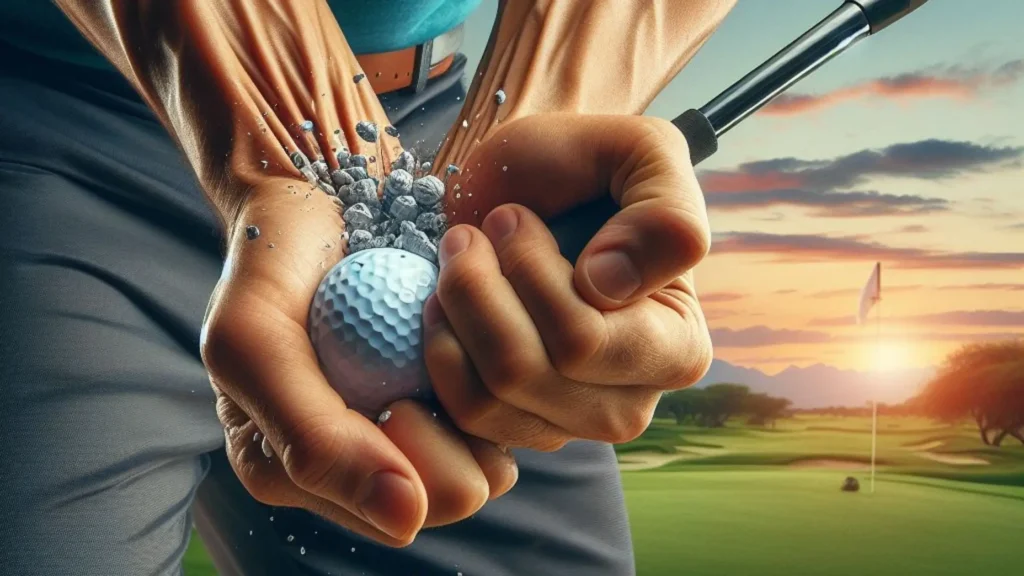The concept of using an intentional “bowed wrist” position, particularly with the lead arm, is highly divisive among golf instructors and players. Supporters believe that allowing some ulnar deviation and dorsiflexion encourages proper sequence timing and facial control. Bowing, critics argue, risks over-closing the clubface and decreasing leverage. Concrete steps can help players decide whether to use bowed wrist elements, while targeted training improves execution. Golfers who take an informed approach can potentially benefit from increased clubface stability while mitigating downside risks.
Understanding the Fundamentals of Bowed Wrist
At setup, the bowed wrist represents a flexed or cupped position, with the lead wrist bending slightly away from the target line. This positions the clubface in a closed orientation relative to the swing path. During the transition, the wrists increase in both bowing and radial deviation while “loading” power accumulators sequentially. A well-timed unbowing approach to impact allows the clubface to square up for solid ball striking. Bowing is inextricably linked to rhythm, with the wrists hinged and unhinging in time with the pivots. The player plays an important role in determining ideal wrist conditions. Strength, flexibility, grip type, and release preference are all important factors to consider.
Advantages of Using a Bowed Wrist Approach
Increased Wrist Cock Consistency
With a braced lead arm, bowing can help keep the wrists fully hinged at the top of a compact backswing. This stretch causes the wrists to uncock forcefully when properly triggered from the transition onward.
Potentially Improved Sequence Timing
Some players may find that starting with a bowed lead wrist creates an effective kinetic sequence. When the rotation pressure increases, the stored wrist cock unwinds with perfect timing to square the face.
Added Clubface Control
Bowed wrists can help golfers who are prone to flipping or casting by giving them more control over the initial clubface angle. A slightly closed preset at setup serves as a face angle “governor” during impact.
Risk Factors to Consider
Hooking and Pulling Tendencies
Overdoing bowed wrist conditions often results in pulls and hooking by delaying clubface closure for too long. The swing path’s direction must correspond to changes in face angle.
Bottoming Issues
Because bowed wrists delay face rotation, bottoming out early can result in the clubface remaining excessively closed. Compressive strikes necessitate a reasonable descending dynamic loft to prevent digging.
Increased Chances of Deceleration
If bowed wrist leverage is used too early, players may instinctively decelerate before impact, reducing power and consistency. The timing specificity necessitates extensive practice.
Determining Bowed Wrist Suitability
Analyzing Release Patterns
Bowing is better suited to players who use squarer clubface releasing actions than those who need to manipulate the face to close during the downswing. Players with cupped wrists are already more likely to draw and hook.
Evaluating the current wrist action
Golfers with insufficient wrist set struggle to power the clubface squarely. However, bowed wrists in sound motions increase the possibility of breakdowns under pressure.
Consider Swing Bottom Positions
Bowing works best with descending attacks when wrist torque is applied correctly. Scoopers and sweeper-type ball-strikers are more at risk than benefit from bowed wrist components.
Bowed Wrist Training Tips and Drills
Wrist Strengthening Exercises
Building wrist flexibility and strength through targeted stretches and exercises improves stability while focusing on bowed positions. This solidifies the fundamentals.
Half-Swing Bowing Focus Drills
Rehearsing intentional bows during controlled half-swings improves wrist mechanics while avoiding excessive closure or casting. Weighted clubs generate loads.
Impact Bag Feedback Training
Practice swings into impact bags provide physical feedback on strike quality using bowed wrist mechanics. Repeat good blows and correct poor face angles.
Utilize Training Aids
Swing trainers that incorporate physical leverage resistance activate key muscle groups in both hinging and properly releasing the bowed lead wrist. This instills pivotal timing.
On-Course Testing
Using actual playing situations trains subconscious tempo with a bowed wrist, resulting in autographed transition sequence timing. Examine ball curvatures closely.
Conclusion
Adopting purposeful bowed wrist positions may benefit some players by ensuring proper wrist hinge/unhinge synchronization. The technique works best with repeatable swing motions and balanced transition timing. However, for inconsistent golfers or scooping ball-strikers, attempting bowed wrist elements can be detrimental. By carefully weighing suitability factors and incorporating intelligent training protocols, players can determine whether bowed wrist methodology is practical.
This unique but intriguing technique necessitates extensive practice and discipline to master safely. Wielding wrist bows correctly may just awaken a golfer’s dormant potential.

